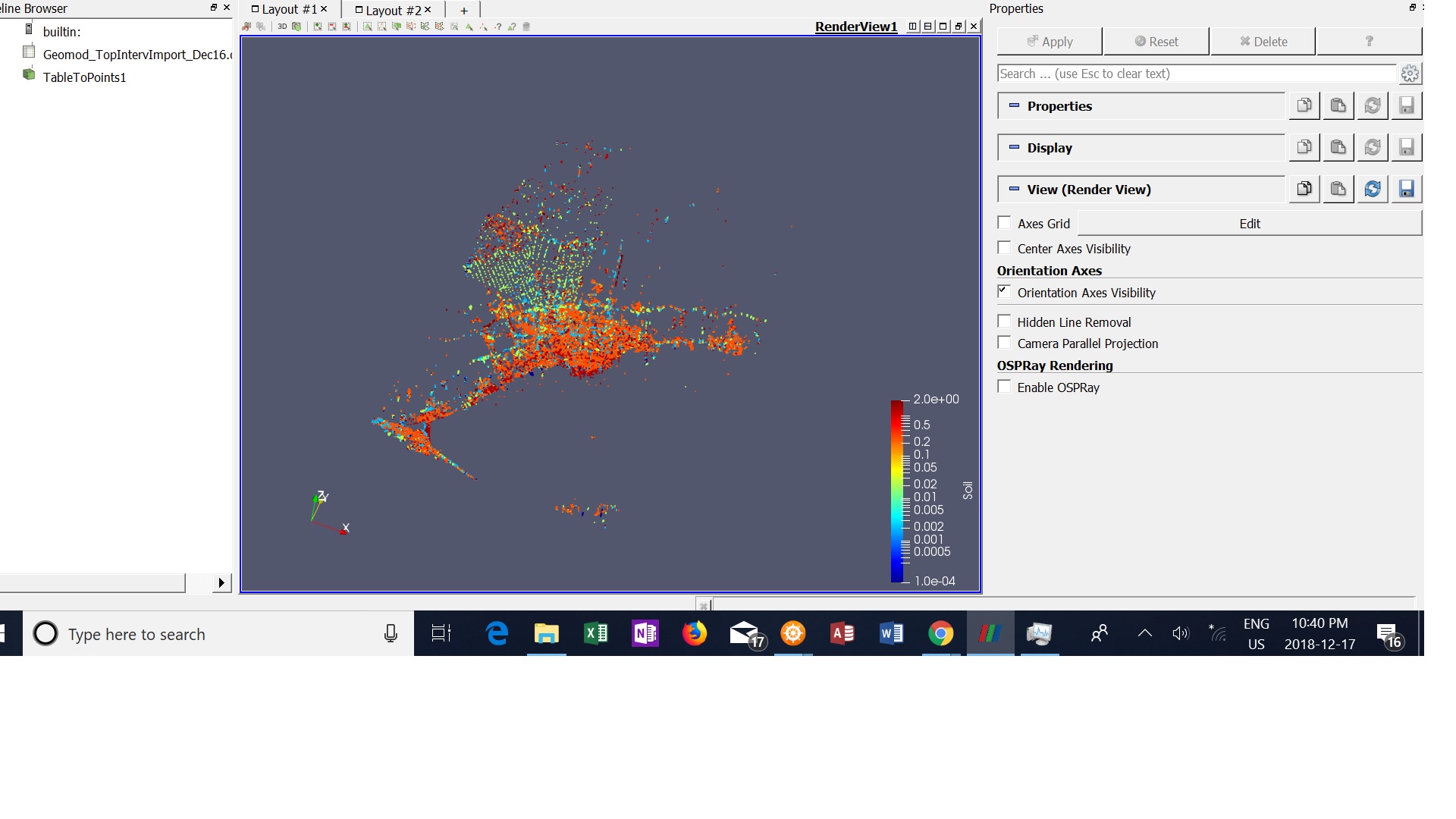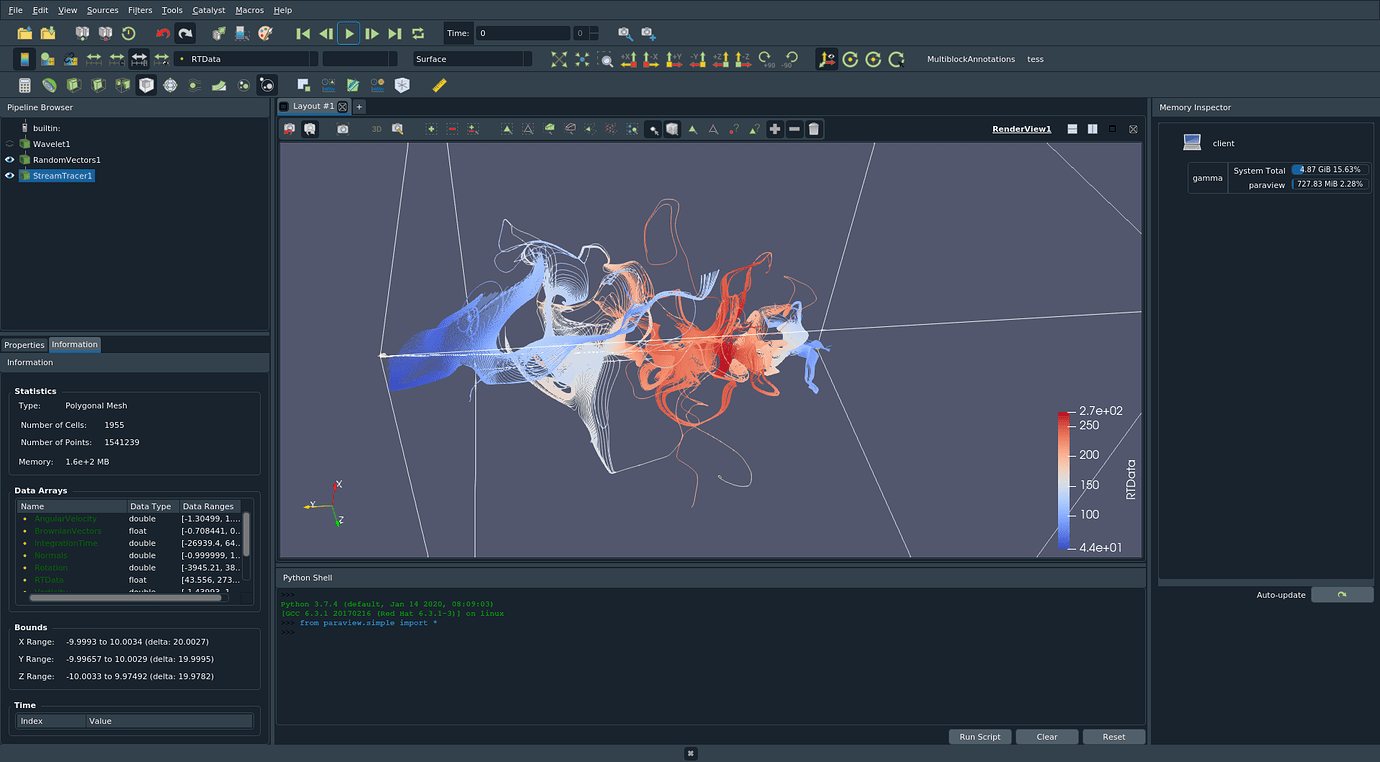

DiGRA 2011, Utrecht, Holland (2011)Ĭhalmers, M., Dieberger, A., Höök, K., Rudström, Å.: Social navigation and seamful design.Kitware recently added to ParaView the export of animations and volumes into ParaView Glance. Xu, Y., Barba, E., Radu, I., Gandy, M., MacIntyre, B.: Chores are fun: Understanding social play in board games for digital tabletop game design. Voida, A., Greenberg, S.: Wii all play: The console game as a computational meeting place. The Journal of the Learning Sciences 4, 39–103 (1995)ĭe Kort, Y.A.W., IJsselsteijn, A., Gajadhar, B.J.: People, places, and play: A research framework for digital game experience in a socio-spatial context. Jordan, B., Henderson, A.: Interaction analysis: Foundations and practice. Voida, A., Greenberg, S.: Console gaming across generations: Exploring intergenerational interactions in collocated console gaming. Juul, J.: The magic circle and the puzzle piece. Harper Editions, New York (1970)Ĭonsalvo, M.: There is no magic circle. Huizinga, J.: Homo Ludens: A Study of the Play Element in Culture. O’Hara, K., Grian, H., Williams, J.: Participation, collaboration and spectatorship in an alternate reality game. Voida, A., Carpendale, S., Greenberg, S.: The individual and the group in console gaming. Mueller, F., Gibbs, M.R., Vetere, F.: Design influence on social play in distributed exertion games. Jolly Roger Games, Charleston (2000)Ĭarter, M., Gibbs, M., Harrop, M.: Metagames, paragames and orthogames: A new vocabulary. (ed.) Horsemen of the Apocalypse: Essays on Roleplaying, pp. Sall, A., Grinter, R.E.: Let’s get physical! In, out and around the gaming circle of physical gaming at home. Information, Communication and Society 6, 551–576 (2003) 220 (2008)įlynn, B.: Geography of the digital hearth. Whitson, J., Eaket, C., Greenspan, B., Tran, M.Q., King, N.: Neo-immersion: Awareness and engagement in gameplay. Broadview Press (2005)īrynskov, M., Ludvigsen, M.: Mock games: A new genre of pervasive play. Suits, B.: The Grasshopper: Games, Life and Utopia. Harper Perennial Modern Classics, New York (1990) Kluwer Academic Publishers (2004)Ĭsikszentmihalyi, M.: Flow: The Psychology of Optimal Experience. (eds.) Funology: From Usability to Enjoyment, pp. In: Blythe, M.A., Overbeeke, K., Monk, A.F., Wright, P.C. Bond University, Evanleigh, Australia (2011)īlythe, M., Hassenzahl, M.: The semantics of fun: Differentiating enjoyable experiences. Interactive Games & Entertainment Association: Digital Australia 2012. 2360 (2010)ĭavis, H., Vetere, F., Francis, P., Gibbs, M., Howard, S.: “I wish we could get together”: Exploring intergenerational play across a distance via a “Magic Box”. Lindley, S.E., Harper, R., Sellen, A.: Designing a technological playground: A field study of the emergence of play in household messaging. MIT Press, Cambridge (2009)ĭavis, H., Vetere, F., Gibbs, M., Francis, P.: Come play with me: Designing technologies for intergenerational play. Juul, J.: A Casual Revolution: Reinventing Video Games and Their Players. MIT Press, London (2004)Ĭonsalvo, M.: Cheating: Gaining Advantage in Videogames. Salen, K., Zimmerman, E.: Rules of Play: Game Design Fundamentals. We explore these roles and their attributes to provide a rich account of paraplay and its importance in understanding playful activities broadly.

We show that participants in a game situation act within a wider context of playfulness, according to a variety of significant roles ranging from active player through to audience member. Drawing on the results of this study we present a taxonomy of paraplay and discuss the ways that playfulness can be exhibited in a social play session. We found numerous types and examples of playfulness within the gaming session even from those who were not actively participating in the game. We conducted video analysis on these recordings as well as interviews with many of the participants. Participants were instructed to record their social gaming sessions.

Six families with a total of 32 participants were provided with an Xbox 360 console, Kinect sensor, and three casual physical video games to play together for a period of approximately two weeks. In order to further understand the role of playfulness in social gaming we conducted an empirical field study of physical console gaming. By critically examining work related to gaming and play goals and motivations we argue that the concept of playfulness should have a stronger role in our understanding of gaming sessions, and particularly social gaming sessions. We present the concept of paraplay: playful activities that take place within the context of an interactive game or other play activity, but outside the activity itself.


 0 kommentar(er)
0 kommentar(er)
